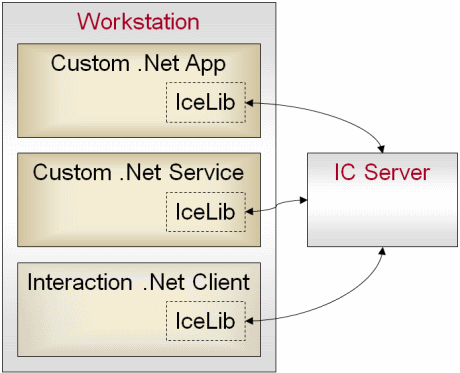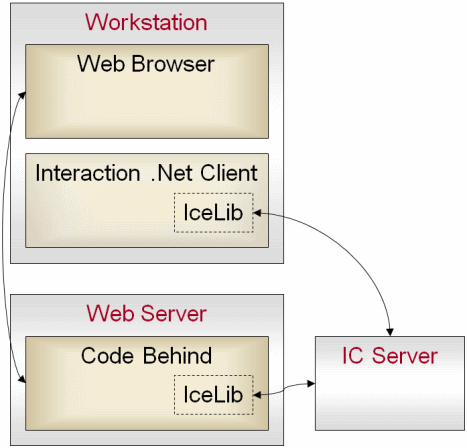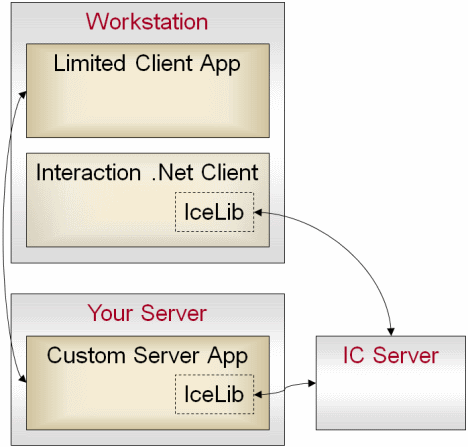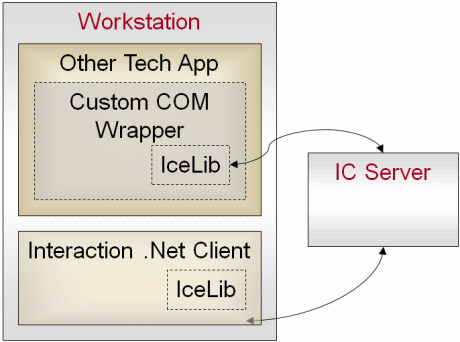There are several different types of IceLib-based integrations.
 Client-Side Integration
Client-Side Integration
A client-side workstation running a custom .Net application that directly uses IceLib to integrate with the IC server. You could even have a custom .Net service on the workstation and integrate with the IC server by using IceLib.
| This integration can be used along-side other IceLib-based applications, such as ININ’s Interaction .Net Client, without interfering with the existing application connection. |
| This is the same mechanism used by ININ’s Interaction .Net Client, Interaction Fax, Interaction Voicemail, etc. |

 Web Server Integration
Web Server Integration
The ASP.NET code-behind uses IceLib on behalf of end user. The code-behind could also perform application-wide operations, independently of a particular IC user.
| This integration can be used along-side other IceLib-based applications, such as ININ’s Interaction .Net Client, without interfering with the existing application connection. |
| This is the same mechanism used by ININ’s 3.0 Web Client. |

 Limited Client-Side Integration
Limited Client-Side Integration
In some cases, a workstation application does not, or cannot, use IceLib directly. Perhaps a legacy client/server protocol cannot be modified or the client application is the product of another company.
In this model, a server-side application uses IceLib on behalf of a Client application or end user.
| This integration can be used along-side other IceLib-based applications, such as ININ’s Interaction .Net Client, without interfering with the existing application connection. However, it might require other features of IceLib (e.g. Proxy logins and/or SessionWatch mechanism). |
| This is the same mechanism used by various ININ Packaged Solutions (e.g. SAP integration). |

 Integration with Other Technologies
Integration with Other Technologies
Applications written in languages that cannot use .Net directly can face additional challenges. Examples include using Java or other COM-enabled languages.
One approach is to create a custom .NET-based COM wrapper that encapsulates high level business-specific operations. The COM object then uses IceLib to implement the specific high level operations needed by the non-.NET application. This approach results in writing fewer COM methods because business specific needs will most likely utilize several IceLib operations in one step.
